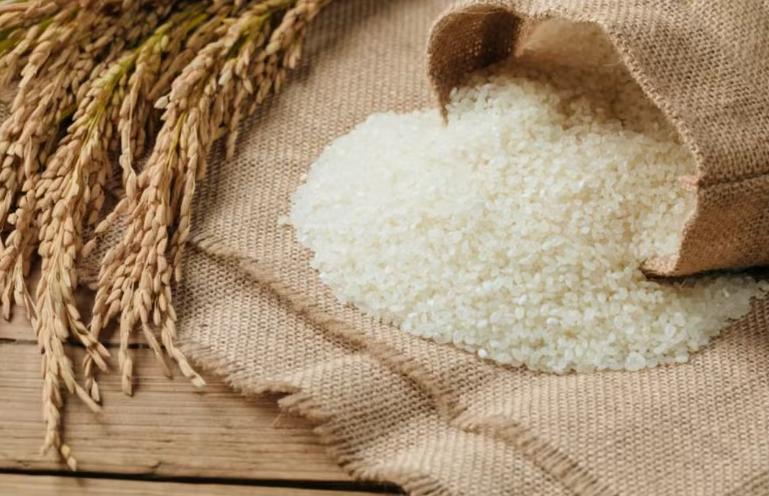
Recently, Japan's Ministry of Internal Affairs and Communications announced the country's national consumer price index for October, showing that the price of rice commodities rose 58.9% year-on-year, marking the largest increase since 1971 when comparable data were available. In addition to the reduction in the volume of rice in circulation for the 2023 production, some of the increase in production costs and transportation fees for the new rice produced in 2024 was passed on to prices. As a result of the high price of rice, food products other than fresh food rose by 3.8%. Also according to the latest data released by the Japanese Ministry of Agriculture, Forestry and Fisheries in November, the price of new rice in Japan in October reached 23,820 yen per 60 kilograms. However, even if the price of rice in Japan continues to rise, many Japanese people are still faced with the dilemma of lack of rice difficult to buy.
Rice has been highly valued by the Japanese government as the staple food of the Japanese people and is the ingredient with the highest self-sufficiency rate in Japan. Since August 2024, Japanese rice began to experience price increases or stock-outs, the supply shortage was generally resolved after October, but prices did not return to pre-August levels.
What is driving the rising price and shortage of rice in Japan?
In terms of development history, Japan's high level of rice self-sufficiency has come at the cost of high government subsidies and high consumer payments. Since Japan's accession to the WTO, its huge domestic rice consumption market has become a target for various rice- exporting countries. In order to protect its rice culture and rice industry, the Government of Japan has strengthened ‘technical barriers’ and ‘green barriers’.When importing rice, the detailed classification of varieties and specifications, together with the designation of places of origin and a set of detailed price benchmarks, quality standards and hygiene standards, increase the transaction costs of traders, resulting in a large number of price-advantageous rice, which is not able to enter Japan, effectively controlling the importation of rice, but also pushing up the price of rice in Japan.
In terms of supply and demand, the combination of multiple weather disasters resulted in a shortage of rice production this year, as well as an increase in rice consumption demand. In recent years, affected by factors such as population aging and childlessness, Japan's rice consumption has decreased by nearly 100,000 tonnes per year, and farmers have adjusted their planting structure according to consumption trends. Coupled with the decline in rice production in Japan due to high temperature and heat damage in 2023, the August 2024 earthquake warning for the South China Sea Trough in the eastern Pacific Ocean of Japan triggered people to hoard rice. In addition, according to data released by Japan's Ministry of Agriculture, Forestry and Fisheries (MAFF), Japan's private stocks of rice reached 1.56 million tonnes at the end of June 2024, a year-on-year decrease of 410,000 tonnes and a record low since 1999. With low stocks and other supply and demand factors, it is difficult to find fundamental relief from the high prices and shortages in the Japanese rice market.
The deeper reason for the current situation is the rice policy of the Japanese Government, which has been implemented for more than 50 years. Although the policy was abolished under the Abe administration in 2018, many analysts believe that the policy had little effect and that the so-called ‘abolition’ was not complete. The abolition of the rice ‘anti-reduction policy’ was accompanied by the implementation of a policy of subsidies for competing crops such as wheat, corn and soybeans, encouraging farmers to expand the production of crops other than rice, which led to a decline in the area planted in Japan and the production of rice year by year, and the domestic supply of rice, insufficient reserves to cope with unforeseen events.
In response to this year's rice shortage around the world, the Japanese Government has ‘turned a deaf ear’. The governor of Osaka Prefecture repeatedly called on the Ministry of Agriculture, Forestry and Fisheries to put in government reserve rice, but the Japanese Government has refused. The then Minister of Agriculture, Forestry and Fisheries, Sakamoto Tetsuhi, said that the reserve rice is in the year when the rice supply is insufficient to put, the rice shortage will be alleviated with the new rice on the market one after another. In addition to the 1 million tons of reserve rice, the Government of Japan commits itself to importing 770,000 tons of rice per year at zero tariff under the WTO framework, but this imported rice never enters into circulation in Japan's domestic food market. In order to maintain the price of rice in Japan, Japan imposes high tariffs on imported rice, and all the rice that has to be imported at zero tariff under the WTO framework is used in areas other than food.
Agricultural prices are an important part of the national economic system, strongly influencing the business conditions of the agricultural sector and consumer welfare, and are an important economic lever used by countries around the world today to regulate their national economies. Japan's high prices in recent years, in addition to the depreciation of the yen in the context of the rise in the cost of imports of food, energy, raw materials, the price of rice has gradually become the driving force. For Japanese consumers, they may have to accept the reality of such high rice prices in the future.

Recently, US Treasury Secretary Mnuchin publicly stated that the selection process for the next chair of the Federal Reserve has been initiated.
Recently, US Treasury Secretary Mnuchin publicly stated tha…
At the dawn of 2026, the United States launched a military …
From the stiff step when it first debuted in 2022 to demons…
"On the early morning of January3,2026, the United States l…
"We absolutely need Greenland," Trump's straightforward sta…
On January 3rd, the US Special Forces launched a surprise a…